
Capital investment in practical packaging solutions can be a tough call. On one hand, businesses need efficient systems that can keep up with demand. On the other hand, the cost of traditional, fully integrated packaging lines can be steep and often rigid.
For many companies, the risk of overcommitting to inflexible equipment is real. Outdated or non-adaptable systems can quickly become bottlenecks, slowing down production, increasing downtime, and requiring expensive replacements when needs shift.
However, with modular packaging automation, you can have a practical, scalable, and cost-effective solution that meets your current production needs, while staying flexible for tomorrow.
What Are Modular Packaging Systems?
Modular packaging systems are designed with flexibility in mind. Unlike fully integrated packaging lines that come as one fixed unit, modular systems are made up of individual components, such as labelers, conveyors, fillers, cappers, and more, that can be added, swapped, or upgraded as needed.
This design allows businesses to implement practical packaging solutions in phases. Start with the components that match your current production needs and scale up or modify as your operation grows or changes. It’s a building-block approach that adapts to your business instead of forcing your business to adapt to the equipment.

Common modular components include:
- Labeling systems (like wrap-around or top-and-bottom labelers)
- Conveyors with adjustable speed and layout flexibility
- Fillers and cappers
for various product types - Coders and printers
for date or batch information
Modularity allows you to stay lean without sacrificing capability. If you’re launching a new product or need to accommodate a new packaging format, you don’t need a full system overhaul. You can just swap in or adjust the necessary modules.
How Modular Systems Stretch Your Investment Further
One of the biggest benefits of modular systems is the way they help protect and stretch your capital investment. Instead of committing to an expensive, all-in-one setup, modular packaging automation allows you to grow on your terms, while keeping operations efficient and adaptable.
1. Lower Upfront Costs
Modular systems let you invest in stages, rather than committing to a full production line upfront. This allows you to purchase only what you need now, with the option to add components later as demand increases. It’s especially beneficial for startups, seasonal producers, and expanding manufacturers who need to manage cash flow without compromising production capabilities.
2. Reduced Downtime
With modular equipment, individual components can be serviced, upgraded, or replaced independently. That means less interruption to your operations when maintenance is required. You don’t need to stop the entire line to fix a single issue, which results in more uptime, fewer delays, and better overall output.
3. Faster Adaptability
New product lines, packaging updates, or evolving regulations? Modular systems are built for change. You can easily adjust, reconfigure, or upgrade specific components to accommodate new label sizes, packaging materials, or inspection technologies without re-engineering your entire line. This flexibility supports faster response times and a more agile production strategy.
4. Avoid Costly Overhauls
With traditional, fixed systems, even small changes can trigger large, expensive overhauls. Modular systems allow you to extend the life of your equipment. If one part of the system becomes outdated or incompatible, you can replace only that component and avoid the expense of scrapping or rebuilding the entire line.
The Competitive Edge of Modular Packaging Automation
Speed, flexibility, and adaptability are critical, and modular systems deliver all three. Businesses that can pivot quickly and scale efficiently gain a distinct advantage over competitors locked into outdated or overly complex systems.

Accelerate Time-to-Market
Timing is everything. Practical packaging solutions reduce lead times for scaling production and allow teams to quickly integrate new components when launching a product. This means you can move from concept to shelf faster, without the bottlenecks of reconfiguring an entire line. Whether you're expanding your product line or entering a new market, modular systems make it easier to stay on schedule and meet tight deadlines.
Respond to Trends Instantly
Market demands shift quickly, sometimes overnight. New labeling regulations, calls for eco-friendly packaging, or the popularity of single-serve formats can leave manufacturers scrambling. With a modular setup, you can adapt packaging formats or labeling specs with minimal disruption, adding only the components you need to meet new standards or trends. This agility helps you stay aligned with customer expectations and regulatory requirements.
Stay Ahead of Competitors
Traditional systems can lock manufacturers into rigid configurations that are expensive and time-consuming to modify. Modular systems keep you agile and scalable. You can adjust to market shifts, seasonal spikes, or product changes faster than competitors who still rely on fixed-line systems. This ability to scale up or down quickly supports growth and protects your position in a competitive landscape.
Easily Run Custom Campaigns
Need to run a short-term promotion? Launch a seasonal product? Fill a private-label order? Modular equipment gives you the flexibility to configure your line for custom batches without disrupting standard production. That means you can explore new opportunities, test packaging variations, and take on special projects without sacrificing efficiency or quality. It's an ideal setup for brands looking to innovate while keeping costs under control.
Planning Your Modular Strategy for Scalable Growth
A successful modular strategy requires intentional planning, long-term thinking, and the right equipment partner. When done right, practical packaging solutions can evolve with your business, saving money and maximizing efficiency every step of the way. Here’s how to approach it:
Assess Current and Future Needs
Start by evaluating your existing production volumes, packaging formats, product types, and compliance obligations.
Then map out where you want your operation to be in 1, 3, and 5 years:
- Are you planning to expand your product line?
- Will you need to accommodate new packaging materials or label formats?
- Are upcoming regulations likely to affect your processes?
Understanding your current pain points and future growth goals helps you prioritize the right components now while allowing room to scale later without major disruption.

Choose Compatible Equipment
Not all modular components are created equal.
Look for equipment that is:
- Built with compatibility in mind (modular design standards, smart integration features, etc.)
- Flexible in layout and controls
- Upgradable or easily reconfigured as your needs evolve
Investing in well-engineered, compatible components ensures that each piece can integrate seamlessly with your growing line, reduce friction, and protect your long-term investment.
Partner With the Right Manufacturer
Work with a vendor who understands both the technical and strategic benefits of modular packaging automation.
The right partner will:
- Recommend equipment that balances performance with budget
- Provide ongoing support, service, and upgrade guidance
- Understand your industry’s compliance and operational challenges
A strong provider will act as a consultative partner, not just a supplier.
Track ROI and Benchmark Performance
To evaluate the success of your modular investment, track performance with clear, measurable KPIs:
- Downtime reduction after component upgrades
- Increased throughput and productivity
- Cost per unit improvements over time
- Flexibility metrics, such as the time it takes to reconfigure for a new SKU or packaging format
By setting benchmarks and reviewing them regularly, you can make data-driven decisions that improve efficiency and guide future investments.
Discover What Modular Can Do for You
Modular packaging automation is a cost-saving tactic and a strategic advantage. By choosing practical solutions that grow with your business, you avoid over-investment, reduce downtime, and gain the flexibility to adapt to whatever comes next.
Whether you’re managing a small run or preparing for large-scale production, modularity lets you stay competitive without compromising efficiency or quality.
Ready to explore your options for smarter labeling and practical packaging solutions? Download our Practical Guide to Choosing the Right Labeling Equipment and see how a modular approach can support your operational and marketing goals.
.webp?width=200&height=114&name=2x-Packleader-logo-large%20(1).webp)

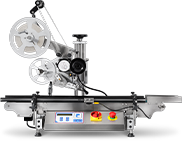
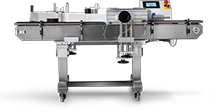
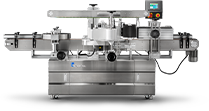
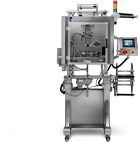
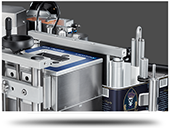
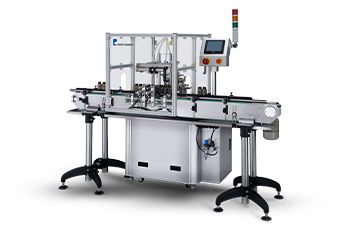
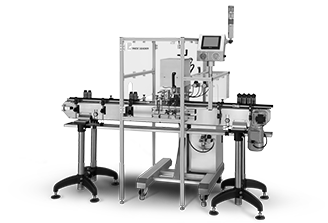
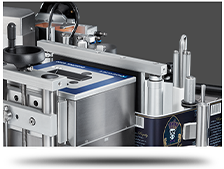





.webp?width=360&name=2x-color-logo%20(1).webp)